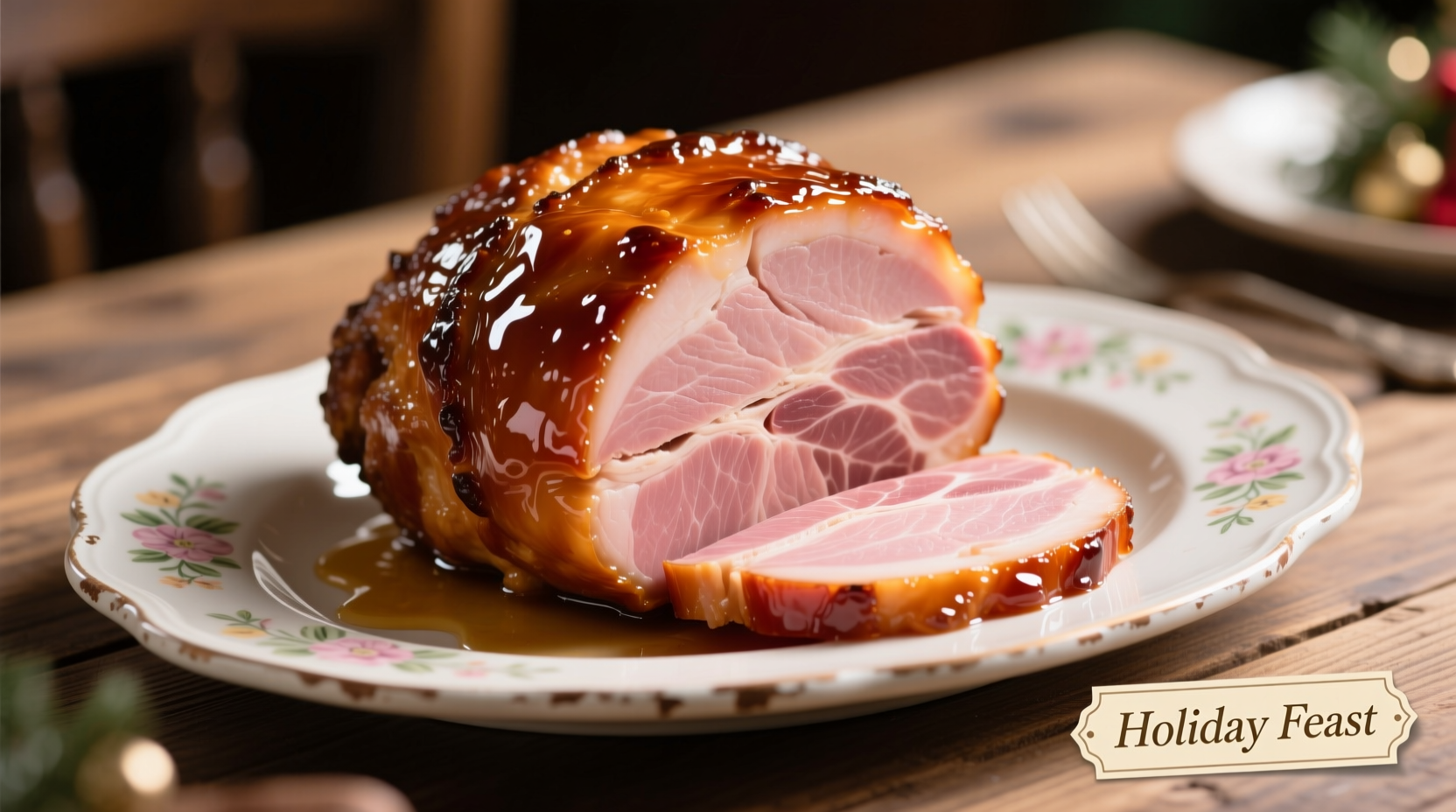Understanding Your Fully Cooked Ham
Before you begin preparation, confirm your ham is truly fully cooked. Check the packaging label for phrases like "ready to eat," "fully cooked," or "heat and serve." Fully cooked hams have already been cured, smoked, or baked during processing. This means you're reheating, not cooking from raw—a crucial distinction that prevents overcooking and dryness.
According to USDA Food Safety and Inspection Service guidelines, fully cooked hams reach safe internal temperatures during manufacturing. Your role is to reheat them to 140°F (60°C) for optimal texture and safety. Never assume a ham is fully cooked based on appearance alone—always verify the label.
| Ham Type | Preparation Method | Label Indicators |
|---|---|---|
| City Ham (Wet-Cured) | Reheat only | "Fully Cooked," "Ready to Eat" |
| Spiral-Cut Ham | Reheat only | "Pre-Sliced," "Ready to Serve" |
| Country Ham (Dry-Cured) | Cook before eating | "Cook Before Eating," "Uncooked" |
Essential Preparation Checklist
Before reheating, gather these essentials:
- Oven-safe meat thermometer (digital recommended)
- Rimmed baking pan or roasting dish
- Aluminum foil or parchment paper
- Basting brush for glaze application
- Sharp carving knife for spiral-cut hams
Thaw frozen hams properly in the refrigerator—allow 4-5 hours per pound. Never thaw at room temperature. A 10-pound ham requires approximately 2 days to thaw completely in the fridge, maintaining safe temperatures below 40°F (4°C).
Perfect Reheating Method: Step-by-Step
Follow this professional technique to maintain moisture while achieving ideal serving temperature:
- Preheat oven to 325°F (163°C)—low and slow prevents drying
- Prepare the ham: Place cut-side down in baking pan. Add 1–2 cups water to the pan bottom
- Cover tightly with foil to trap steam—this is critical for moisture retention
- Calculate cooking time: 10–15 minutes per pound until internal temperature reaches 140°F (60°C)
- Apply glaze during the final 20–30 minutes with foil removed
For a 10-pound ham, expect approximately 1½–2½ hours total reheating time. Insert your thermometer into the thickest part, avoiding bone. The National Pork Board confirms that reheating beyond 140°F (60°C) causes excessive moisture loss.

Flavor-Enhancing Glaze Techniques
Apply glaze during the final 20–30 minutes of reheating when the ham surface is warm enough to caramelize properly. Three proven combinations:
- Classic Brown Sugar: 1 cup brown sugar, ¼ cup Dijon mustard, 2 tbsp apple cider vinegar
- Pineapple Ginger: 1 cup pineapple juice, ½ cup honey, 2 tbsp grated ginger
- Maple Bourbon: ¾ cup pure maple syrup, 3 tbsp bourbon, 1 tsp smoked paprika
Brush glaze every 10 minutes for optimal adhesion. For spiral-cut hams, pour half the glaze into the pan bottom—the natural grooves will wick flavor upward during reheating. The American Egg Board recommends this technique for maximum flavor penetration without drying.
Avoiding Common Mistakes
Ham preparation pitfalls often stem from misunderstanding the "fully cooked" designation. Key mistakes to avoid:
- Overheating: Exceeding 140°F (60°C) causes protein contraction and moisture loss
- Early glazing: Applying sugary glazes too soon leads to burning rather than caramelization
- Dry reheating: Never reheat without liquid in the pan or protective covering
- Incorrect thawing: Room-temperature thawing creates bacterial growth zones
Historically, ham preparation evolved significantly after the 1940s when industrial curing processes standardized fully cooked products. Prior to this, most hams required lengthy cooking—a crucial context explaining why many traditional recipes mislead modern cooks. Today's fully cooked hams need only gentle reheating, reflecting advances in food science and safety standards documented by the USDA.
Serving and Storage Guidelines
Carve spiral-cut hams by following the pre-cut grooves with a sharp knife. For non-spiral hams, slice perpendicular to the bone in ¼-inch thick pieces. Serve immediately while internal temperature remains between 130–140°F (54–60°C) for optimal texture.
Refrigerate leftovers within 2 hours. Store in airtight containers for up to 5 days. For longer storage, freeze portions in vacuum-sealed bags for up to 2 months. When reheating leftovers, use 275°F (135°C) oven with moisture—never microwave, which creates uneven heating and rubbery texture.
Troubleshooting Guide
Dry ham? Immediately wrap slices in damp parchment paper and warm at 250°F (121°C) for 10 minutes—the steam will revive moisture. Burnt glaze? Scrape off charred portions and apply fresh glaze during final reheating phase. Uneven heating? Rotate the pan 180 degrees halfway through reheating for consistent results.











 浙公网安备
33010002000092号
浙公网安备
33010002000092号 浙B2-20120091-4
浙B2-20120091-4